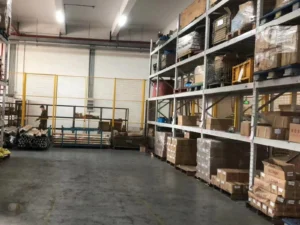Table of Contents
ToggleHow Do Elevators Work: Understanding the Basic Components of Elevator
Elevators have become an integral part of our daily lives
Elevators have become an integral part of our daily lives, transporting us effortlessly from one floor to another in the blink of an eye. But have you ever wondered how these fascinating machines actually work? In this article, we will delve into the basic components of an elevator, shedding light on their functionality and exploring their wide range of applications.
The most fundamental component is the elevator car itself
At its core, an elevator is comprised of several key components that work together seamlessly to provide a safe and efficient means of vertical transportation. The most fundamental component is the elevator car itself. The car is responsible for carrying passengers or goods up and down the building, and it is typically constructed using sturdy materials like steel and glass. Operating within strict weight limits, the car is designed to maximize space utilization, with various configurations available to suit different needs.
How does the elevator car move between floors
This is made possible by an intricate system of pulleys and cables called the hoist mechanism. The hoist mechanism consists of a powerful electric motor, a series of wire ropes, and a set of pulleys. When the motor is activated, it causes the wire ropes to unwind, thereby lifting or lowering the elevator car. This mechanism utilizes counterweights to reduce the load on the motor, making the operation more energy-efficient.
How does the elevator car move between floors
This is made possible by an intricate system of pulleys and cables called the hoist mechanism. The hoist mechanism consists of a powerful electric motor, a series of wire ropes, and a set of pulleys. When the motor is activated, it causes the wire ropes to unwind, thereby lifting or lowering the elevator car. This mechanism utilizes counterweights to reduce the load on the motor, making the operation more energy-efficient.
Another crucial component of elevators is the control system
This system ensures smooth and safe operation by monitoring various parameters, such as car position, speed, and door status. Using advanced sensors and algorithms, it regulates the movement of the elevator car, ensuring that it stops precisely at the desired floor level. The control system also plays a vital role in emergency situations, allowing for immediate responses such as stopping the elevator or opening the doors in case of a malfunction.
Elevators are not only confined to traditional buildings; they have also found their way into numerous specialized applications. One notable example is in the realm of construction. Construction elevators, equipped with robust safety features, are used to transport workers and materials to different levels of a building under construction. These elevators often have larger weight capacities and sturdier designs to accommodate heavy loads and withstand harsh working conditions.
Additionally, elevators play a significant role in transportation systems, particularly in metro stations and airports. Public transit authorities rely on elevators to provide accessibility for individuals with physical disabilities or limited mobility. In these applications, elevators must adhere to stringent safety and reliability standards to ensure the seamless movement of passengers through busy transportation hubs.
When it comes to customer concerns and requirements, there are several aspects that are of utmost importance
The safety of passengers is paramount. Elevators are fitted with several safety features, such as emergency brakes, backup power systems, and overload protection mechanisms, to ensure the well-being of users. Reliability is also a crucial factor, as customers expect elevators to operate smoothly and consistently, minimizing downtime and delays.
Furthermore, customers often consider the aesthetics and design of elevators. Building owners and architects seek elevators that complement the overall aesthetic of the building, with customizable finishes, lighting options, and control panels. Elevators can be equipped with touchless technology and smart features, allowing for a more modern and convenient experience.
Elevators are complex machines that rely on a set of basic components to provide efficient vertical transportation
Understanding how these components work together is essential in appreciating the intricate engineering behind this everyday convenience. From the elevator car to the control system, each component plays a vital role in ensuring safe and reliable transport. Whether it’s in residential buildings, construction sites, or transportation hubs, elevators continue to evolve and adapt to meet the diverse needs and expectations of customers around the world. So the next time you step into an elevator, take a moment to appreciate the remarkable engineering behind it.
We Are Independent Elevator(IDD)
Independent Elevator(IDD) is a company specializing in various brands of elevator transformation and replacement of accessories.
Both the company’s founders has more than 25 years of elevator design and installation of professional engineers, as well as more than 15 years of elevator industry foreign trade experience in charge.
We have sufficient inventory and can quickly respond to orders and deliver goods.


